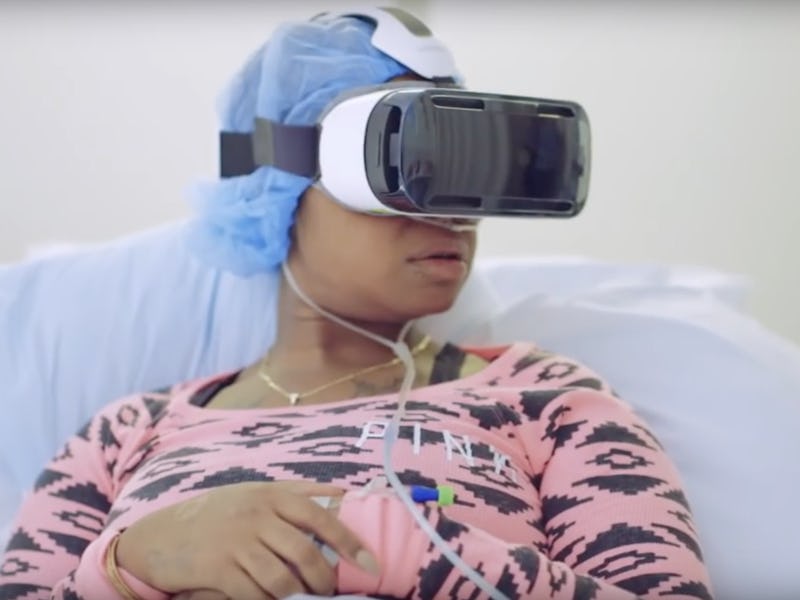Virtual Reality Being Tested as Treatment for Post-Surgical Pain
AppliedVR is working to make virtual reality the future of post-operative pain management.

The future of post-operative pain management might not involve pills — it might not involve medication at all.
For the first time, hospitals are exploring an effective substitute that bears no risk of addiction: virtual reality.
Virtual reality start-up AppliedVR has partnered with Cedars-Sinai Medical Center in the first stage of what the former hopes to make a widespread implementation of VR as a medical tool in a series of other top hospitals and surgery centers. They already have three clinical studies underway at the Children’s Hospital of Los Angeles. They’ve been working on the technology for about two years, and with Cedars-Sinai for 18 months.
Dr. Walter Greenleaf, the Chief Science Officer for Applied VR and a 30-year veteran of the industry as it pertains to medical applications, says the technology is suitable for any level of pain.
“The more severe [the pain], the more effective this is,” Greenleaf tells Inverse. “I’d say there isn’t any cap.”
At the moment, Cedars-Sinai patients have access to three different gaming options, plus some guided meditations. The games are designed to appeal to a broad age range. One game focuses on shape recognition — you have to pick up an object, and place it in the right shape, a little like Tetris, and work to build a bridge from Point A to Point B. The second lets you shoot at bears. And the third is a “feeding frenzy” format, with animated cats requiring different types of food, which you must recognize and tend to. The focus is on the interactive element.
“Everything has to be continuous flow,” Matthew Stoudt, CEO and co-founder of AppliedVR, tells Inverse. “So the traditional gaming [format of] ‘Live, Die, Repeat’ doesn’t work when you’re talking about someone going through pain; you don’t want to break that cognitive flow.”
Selective Attention Theory
Greenleaf brings it back to a basic principle of neuroscience called the Selective Attention Theory; there’s literally only so many things our brains can pay attention to at one time. If your consciousness is redirected through VR, it reduces your recognition of pain. The moment the patient starts to experience acute pain during their recovery from surgery, they can go into the headset and select their desired program.
Stoudt says the technology can be used to create better outcomes and better patient experiences even beyond the context of just post-operative pain. A VR tour of the hospital before the patient arrives, for example, can help relieve anxiety. Even more intriguing is the introduction of VR as a substitute for anesthesia.
“In some situations, you use general anesthesia on a patient for no other reason than that the patient has high anxiety,” Stoudt said. “The less sedation you give a patient, the lighter it is on the body and the sooner that patient can get up and walk out … and this can reduce the probability of addiction. We just want you addicted to VR.”
At the moment, AppliedVR is utilizing the Samsung Gear headset. In addition to potentially reducing morphine addiction and improving patient experience, the plan is for Applied VR to expand to essentially all areas of medical application.
“Our broadest vision is that ultimately, we define ourselves as a platform to deliver validated therapeutic content,” Stoudt said. “A VR pharmacy, if you will. A Netflix for validated therapeutic content. There’s a role for VR in healthcare that can have a major impact — with chronic pain, acute pain, anxiety, depression … ultimately, we want to own that space.”